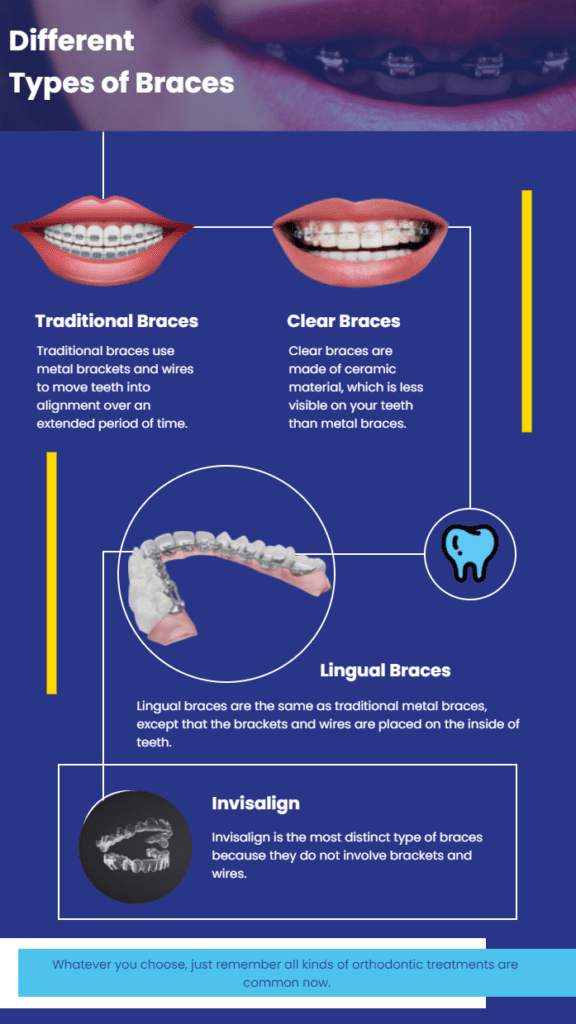Comprehensive Overview to Orthodontics Treatments for Correcting Dental Misalignments
In the realm of orthodontics, the journey to attaining a perfectly aligned smile involves a myriad of procedures tailored to remedy dental imbalances. From traditional braces to unseen aligners and even surgical options, the area of orthodontics uses a variety of solutions to deal with differing levels of oral irregularities. Understanding the intricacies of each procedure, including their systems, advantages, and possible drawbacks, is critical in making informed choices about one's orthodontic therapy. As we navigate with the extensive overview to orthodontic treatments for dealing with dental misalignments, the elaborate information of each approach will unfold, shedding light on the path toward a unified and practical dental alignment.
Orthodontic Procedures Summary

In enhancement to clear aligners and traditional braces, orthodontists may likewise advise various other interventions like headgear, palatal expanders, or retainers to resolve particular alignment issues (cumming braces). These procedures are customized per client's special demands and may include a combination of treatments to achieve the desired results. Normal adjustments and tracking are vital components of orthodontic therapy to ensure progress gets on track and to make any type of necessary alterations along the method. By going through orthodontic procedures, clients can not only accomplish a straighter smile but additionally improve their total oral wellness and feature.
Standard Dental Braces: How They Function
When thinking about orthodontic treatments for oral misalignments, typical braces attract attention as a reliable technique for dealing with teeth positioning. Typical braces are composed of braces, cords, and bands that collaborate to apply constant stress on the teeth, gradually relocating them right into the preferred alignment. The brackets are connected to the teeth using an unique adhesive, and the cords are threaded through the braces. By readjusting the tension of the wires, orthodontists can manage the instructions and pressure applied to each tooth, directing them right into correct placement in time.
As pressure is used to the teeth with the braces, the bone surrounding the teeth is improved to support the new tooth placements. Individuals will need normal modifications at the orthodontist's office to make certain the braces continue to use the appropriate pressure for reliable teeth motion.
Undetectable Aligners: Cons and pros
These clear, custom-made trays are basically unnoticeable when put on, making them an appealing choice for people seeking a much more cosmetically pleasing orthodontic treatment. Patients can eliminate the aligners prior to eating or brushing their teeth, lowering the danger of food obtaining stuck in the appliance and simplifying the cleansing process.

Surgical Orthodontic Options
Surgical treatments in orthodontics present feasible alternatives for addressing complex dental imbalances that may not be successfully solved via standard orthodontic treatments. While typical braces and invisible aligners can remedy several orthodontic problems, specific cases need medical treatment to accomplish ideal results. Surgical orthodontic choices are commonly recommended for severe malocclusions, considerable jaw discrepancies, and instances where the underlying bone structure needs alteration to attain correct positioning.
One usual surgical orthodontic procedure is orthognathic surgical procedure, which entails repositioning the jaws to fix practical problems such as problem talking or chewing. This surgical treatment is frequently carried out in collaboration with an orthodontist that assists line up the teeth before and after the procedure. Surgical orthodontics may also entail procedures to expose influenced teeth, remove excess gum tissue, or improve the jawbone to produce a more unified face profile.
Before dental dentist taking into consideration medical orthodontic choices, clients undertake a comprehensive assessment to figure out the requirement and potential advantages of such treatments. braces. While surgical treatment may seem challenging, it can significantly improve both the feature and visual see this website appeals of the smile in instances where standard orthodontic therapies drop short
Retainers and Post-Treatment Treatment

Post-treatment care involves following the orthodontist's instructions diligently. This might consist of proper oral health techniques, participating in follow-up consultations, and putting on the retainers as prescribed. Failure to adhere to post-treatment treatment directions can cause relapse, where the teeth slowly return in the direction of their original settings. Consistent retainer wear, great oral health, and routine dental check-ups are necessary for preserving the results attained via orthodontic surgery and making sure the long-term stability of the corrected dental positioning.
Final Thought
In verdict, orthodontic treatments offer various choices for dealing with dental imbalances. Standard dental braces utilize steel brackets and anonymous wires to move teeth into correct positioning. Unnoticeable aligners supply an even more discreet choice however might not be suitable for all situations. Surgical orthodontic choices are offered for a lot more serious misalignments. Retainers are commonly made use of post-treatment to preserve the brand-new alignment. On the whole, orthodontic procedures can efficiently boost oral health and wellness and aesthetic look.
As we browse through the thorough guide to orthodontic treatments for remedying oral imbalances, the intricate details of each approach will certainly unfold, losing light on the path towards a unified and functional dental positioning. - invisalign
One of the most usual orthodontic therapies is the use of braces, which consist of steel braces and cables that apply mild pressure to slowly shift teeth into the wanted setting.When thinking about orthodontic treatments for oral misalignments, traditional braces stand out as a time-tested approach for dealing with teeth positioning. In addition, invisible aligners might not be appropriate for complex orthodontic issues that require even more substantial teeth activity, as they are typically recommended for moderate to moderate instances. Retainers are personalized orthodontic devices created to hold teeth in their remedied settings after the completion of orthodontic therapy.